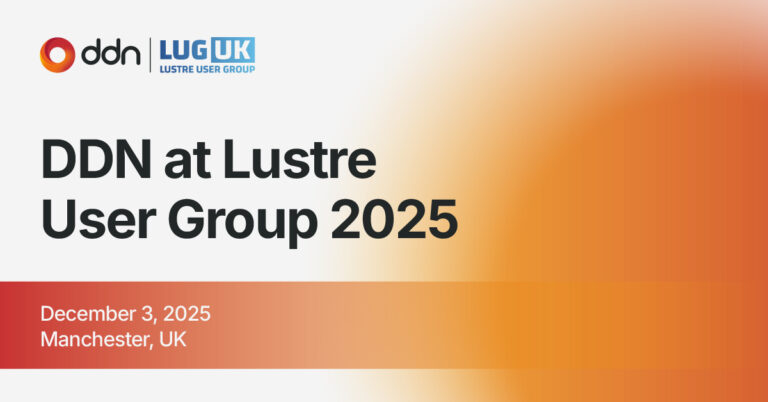A data factory? Seriously? That sounds like a way to generate even more data. Aren’t most of us already drowning in data? Well, yes, but that’s not exactly what we’re talking about. In fact, we want to help you use that data to swim like an Olympic champ, not drown in a sea of trivia. Think of an AI Factory as a specialized, industrial-scale platform that mass-produces intelligence, built to deliver predictable performance to specific workloads and SLAs so innovation moves faster and with less risk.
The AI Factory: accelerating the process from ingest to monetization, is a systematic way to manage, process, and utilize enterprise data using AI to get the most value from an organization’s data. We might call it a Data Monetization Factory – though that term closely resembles a “money-making shop” and sounds a bit crude. And while it’s tempting to focus on the end goal (i.e. money or revenue), it’s more important to look at the process. In modern terms: AI Factories transform raw data into tokens, decisions, and services at scale, optimizing AI workloads so outcomes arrive sooner and at lower cost.
In this case, we’re talking about transforming raw, fragmented, multi-sourced data into a refined and cohesive set of actionable, high-value insights, analysis, decisions, and services – driven by AI and ML – which can generate new avenues for monetization. Done right, these platforms generate tokens efficiently across the full AI lifecycle (ingest, training, inference/RAG), with built-in elasticity and governance so scale never slows the business.
Sure, execs at every organization understand that data is valuable… They’ve been monetizing data internally for centuries to cut operating expenses and increase productivity. These monetization efforts have mainly been cost-saving measures, which are obviously still valuable today.
But what about opportunities to monetize data externally? Like using data to create fresh opportunities for sales and revenue, for laser-focused customer marketing and superior customer experiences, and to bravely take advantage of rapidly changing market conditions? External data monetization also means expanding its value beyond enterprise boundaries by sharing data or selling it to customers, partners, or third parties.
Yes, many execs have warmed up to the idea of external data monetization. They want to do it. And they know that AI and analytics are increasingly important for driving data monetization. But many aren’t looking at AI data management and analytics strategically. In fact, over 70% of businesses don’t have a data and analytics strategy. And even if they do understand the need for a strategy, they’re often unable to implement one. Why?
Because a strategic approach to AI data management also requires technology that’s powerful and strategic enough for AI-driven data monetization. Most of today’s IT systems and storage solutions can’t provide the massive horsepower, scale, and intelligence for this next era of AI data processing and LLMs that comprise trillions of parameters. Nor are they flexible enough to support all the different data and file types or integrate with all data sources. When pipelines are stitched together from point tools, GPU utilization often collapses to 40–60%, starving training and stalling inference, wasting tens of millions per factory, and blocking POCs from becoming production.
For most organizations, there’s just too much data. It’s growing too fast. It’s coming in from all over, from countless devices, and then scattered all over the place. And it’s often unintentionally stranded in silos, unavailable for wider collaboration. Up to 90% of new data for ML and analytics is also unstructured, coming from IoT, web pages, emails, social media, video, and audio files, etc.
This massive volume of disparate data is not only hard to manage, it is increasingly hard to find and extract the valuable nuggets of info among the mountains of irrelevant noise. Nevertheless, it all needs to be captured, secured, and analyzed, because some of this data is going to be very valuable – maybe today, maybe next year.
To summarize, the biggest storage and data management limitations that thwart monetization efforts include:
- Inadequate performance and scale for AI and analytics, which slows data ingest, AI training and time-to-value.
- Inability to support different data types and protocols for future growth and evolution.
- Inability to guarantee secure data governance, sharing and management.
- Delayed or incomplete analytic results which fail to keep data scientists productive.
Enter the AI Factory approach that leading enterprises, governments, and cloud providers are racing to deploy, from sovereign AI initiatives to financial services, life sciences, automotive/digital twins, and multi-tenant GPU-as-a-Service platforms.
What enterprises need is a flexible, data-centric IT approach; a massively scalable, high-performance data and AI platform that can operationalize and accelerate the end-to-end AI data lifecycle process to achieve AI at scale with future-resistant adaptability. That means a controlled, secure environment that stays elastic at growth so operating at scale doesn’t slow the business.
According to Accenture, “The platform should be foundational and enterprise-wide to allow for interoperability of cross-functional data to maximize power. These platforms can create analytics reports, train artificial intelligence or machine learning models to hone predictive capabilities or be used for operational applications and can convert data for easy consumption and enable agile data processing. The platforms are built for speed and adaptability, enabling the processing of complex, data-driven insights in real-time. The platform is comprised of numerous capabilities to enable the entire data and analytics ecosystem.”
Now, let’s tie this back to the AI Factory and DDN’s approach to data management. The figure below shows an AI data lifecycle model. It’s powered by the DDN Data and AI platform, a centrally managed solution comprising the industry’s fastest storage and data movement technologies at scale. All the different enterprise data represent raw materials that are ingested into a multi-stage AI lifecycle process to ultimately produce multiple AI models and services. DDN is the certified storage and data-intelligence platform inside the AI Factory; ensuring GPUs run at peak efficiency, supporting multi-tenancy and elasticity, and enabling multi-cloud, multi–data-center deployments deeply integrated with NVIDIA.

DDN’s AI and Data Platform includes AI storage technologies optimized for GPU-driven supercomputers and AI frameworks. These technologies deliver the massive scale and performance for “inner ring” stages within the AI data lifecycle such as AI training. The AI and Data Platform also includes a multi-protocol AI data fabric which automates data distribution, multi-tenant SLA management and data protection for “outer ring” stages such as ingest, processing, production, and storage management. Pre-validated with NVIDIA’s next-gen designs (e.g., Blackwell and GB200 NVL72) and NVIDIA AI Enterprise, DDN’s platform plugs in quickly and scales from terabytes to exabytes without rewrites.
Operationalizing the AI data lifecycle in this manner improves efficiency and provides a faster route to AI-driven services. These services elevate the value of data and facilitate both internal and external data monetization. In practice, customers sustain 90–95% GPU utilization (up to 99%), cut node counts, and reduce power/cooling – often by 74% – which accelerates time-to-results and improves margins.
The AI Factory model is helping DDN customers overcome end-to-end AI data lifecycle challenges and the limitations of conventional storage solutions. With DDN’s Data and AI Platform, enterprises can realize the following advantages, which directly enhance their data monetization efforts:
- Simplicity. A silo-free solution that ingests and manages data from dozens of sources.
- Speed. Accelerated deep learning and insights with 10× IOPS and 100× GPU rates eliminating storage bottlenecks so GPUs stay fed.
- Reliability. Guaranteed, automated data accessibility and service levels with policy-driven QoS/SLOs and multi-tenant isolation for predictable performance.
- Scale. Dynamic growth to supercomputer class without bottlenecks: modular terabyte to exabyte expansion, 116 fewer nodes at scale and 74% less power & cooling in documented deployments.
- Governance. Secure auditing, data sharing, and management of all AI data making it ready for sovereign, regulated, and multi-region requirements.
Bottom-line economics: AI outcomes at 1/10th the data cost of alternatives; $257M ROI over 3 years at 10,000 GPUs; and historical programs where $1 invested in DDN + NVIDIA yielded $6.5 in AI revenue; all while moving from pilot to production faster thanks to certified, integrated designs.
Read our recently published white paper, “The AI Factory” and learn how DDN can help you accelerate and broaden your path to data monetization.



